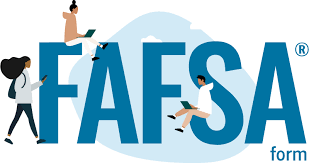How Do I Pay for College?
One of the biggest barriers to education in America is financial. How do I pay for school? Here is the answer.
EDUCATIONSELF-IMPROVEMENT
3/6/20255 min read

Knowing how to pay for school, college, or trade school can be the biggest barrier to getting ahead in life and financially. There are many options available to pay for school, but knowing where to look and what to trust can be so challenging. Especially if you don't have experience or know anyone who can guide you.
When I went to college the first time, fresh from homeschooled high school, all I knew was that you could get federal loans and worry about paying later. So, at the age of 16 I signed away my future paychecks.
Is this the best course of action? Many people know school is expensive and taking out loans to pay for it is scary. In this blog, I want to help you take the first step in receiving options for paying for school. What you choose to do with the options will depend on your individual circumstances.
Fill out your FAFSA
Unless you are sitting on a pile of free money that is earmarked for school, fill out a FAFSA. (You still should fill out the FAFSA, either way, because you might get free money) What is a FAFSA? The Free Application for Federal Student Aid allows you to apply for federal money specifically to use for school. This application is available online, is free, and is renewed every year.
You will need your ID and previous 1-2 years of tax information. I know. That is the part that sucks. However, since FAFSA is on the studentaid.gov website, it is able to connect to other federal agencies, such as the IRS. They may be able to connect directly to retrieve your tax information. However, if they cannot, I suggest going on to IRS.gov and create an account. You can request a copy of your taxes. They will email them to you and you should keep that information in a handy file on your desktop.
You need to be a U.S. citizen or eligible noncitizen.
You must already be enrolled in an accredited program/approved school.
Have financial need, and
Make good academic progress.
What are you applying for?
When you fill out the FAFSA, you are applying for the federal student aid program to assess your financial situation. They include not just tuition, but the cost of housing, food, books, transportation, computer fees, dependent care, etc. during the semesters/year that you are in school. The less money you make, the more advantage you have in this arena. The government can offer you grants, scholarships, work-study opportunities, and federal loans. These can be divided up into two categories:
Money you DO NOT pay back: Grants, scholarships, work-study opportunities
Money you DO pay back with interest: Loans
The federal government will offer you whatever you qualify for. You can chose to accept, modify, or reject anything that is offered to you. In all financing cases, you can accept as much of the awards as you want. This information is processed through the school you are attending. The government will send all of the money you accepted from the award to your school. The school will pay your school bill (tuition, fees, etc.) and then send the rest of the money directly to you, either as a check in the mail or a direct deposit in a bank account you provide to them.
Grants and scholarships can be accepted fully to support whatever you need to get through school. That is money given to you. that you do not have to pay back. In other words; FREE MONEY!
The loans, on the other hand, are like real loans, they need to be paid back, with interest. There are a few different types of loans, and, again, the federal program will offer you what type of loans they are willing to award you. Here are the differences between loan types:
Direct Subsidized Loans:
Eligibility is for undergraduate students who demonstrate financial need
The government pays the interest on these loans for you while you are enrolled in school at least half-time (6+ credits) and during the 6-month grace period after you finish school.
Direct Unsubsidized Loans:
Eligibility is for undergraduate, graduate, or professional students regardless of financial need.
You are responsible for paying the interest while you are enrolled.
Direct PLUS Loans:
Eligibility is for graduate students, professional students, and parents of dependent undergraduate students.
Borrowers pay all of the interest.
Requires a credit check.
Loan Terms:
Interest rates are fixed and set annually by Congress.
Fees usually consist of small originations fees deducted from the disbursements of the loans.
Repayment begins after graduation or you stop enrollment (or only enroll in less than 6 credits). If you take a semester off, your payments may start after 6 months. This excludes Direct PLUS loans.
Repayment Plans are varied and always changing. Since the U.S. Department of Education, Executive Branch, and Congress are responsible for approving or passing repayment plans, they can change (especially with the new administration). The typical "rule of thumb" is that you will be paying on your loans for 10 years. Depending on how much you've borrowed, the payments can be small or large. Typically, an Income-Driven Repayment is offered, where your earnings and family size can reduce your monthly payments. If you go back to school and enroll in at least 6 credits, the payments will stop.
Deferment versus Forbearance:
Deferment is a temporary stop of payments due to
Returning to school at least half-time (6 credits)
economic hardship or unemployment
military service
graduate fellowship programs or habilitation training programs
If you have a subsidized loan, the interest is paid for you by the government. If you have an unsubsidized loan, the interest will continue to stack up. You can pay interest if you chose to in deferment.
Forbearance is a temporary postponement or reduction of payments if you do not qualify for deferment.
Granted due to financial hardship, illness or other reasons.
Mandatory forbearance is granted for medical/dental internship or residency, National Guard duty, or high loan payment-to-income ratio.
Interest continues to accrue for all loan types. If you do not pay interest at this time, it is added to the loan.
Typically is granted for smaller periods of time up to 12 months or a cumulative limits of up to 3 years.
Benefits and Protections exist under a federal loan. Besides repayment options, there is also loan forgiveness. Programs like Public Service Loan Forgiveness (PSLF) or Temporary Employer Eligibility for Public Service Loan Forgiveness (TEPSLF) may forgive the remaining balance of your federal loans. These programs usually require you to be working in a specific field or sector and have completed a certain amount of time in that position. For example, nurses who work in certain public health sectors may be eligible. Always check on the Federal Student Aid page.
When looking at financing school, apply for every grant or scholarship that you qualify for. The best bet is to pay for it with free money! However, we don't all qualify. But I will tell you, if you do well in school, the next semester or year, you may get even more free money. Often times schools reward good students. Besides that, a federal loan usually has lower interest rates and kinder repayment options than private banks.
Please, do not put school on your credit card and pay an insane amount of interest on it!


